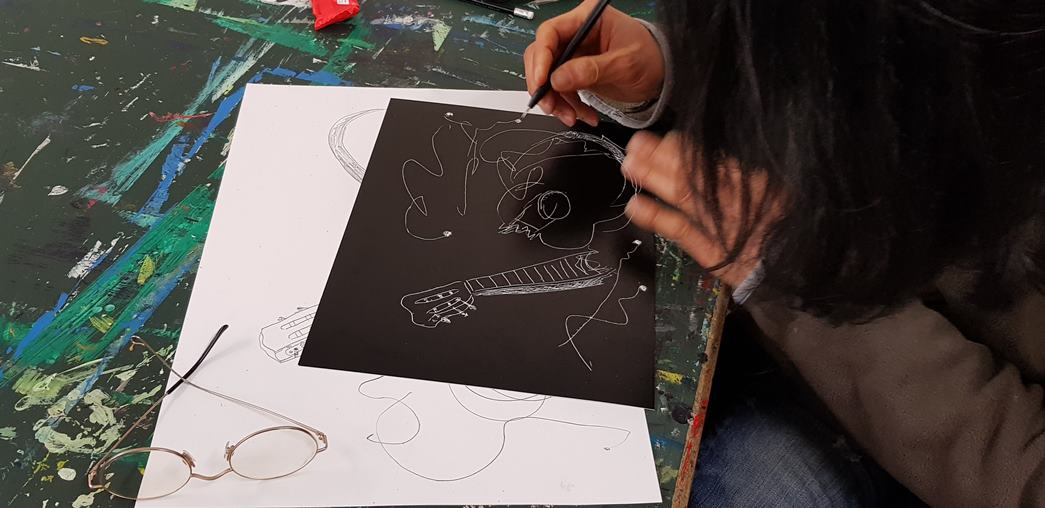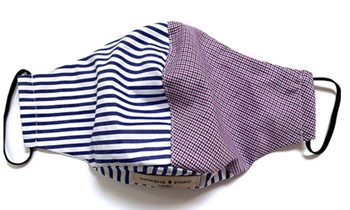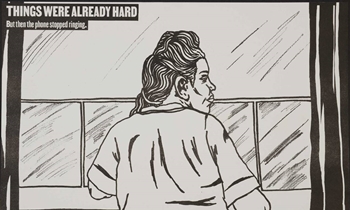Inner rooms, inner minds
How can London’s mental health crisis — intensified by COVID-19 — be documented and collected through social art practice?
As part of our Collecting COVID project, the Museum of London commissioned Applied Live Art Studio (ALAS) to produce a work of art responding to London’s mental health during the pandemic. We asked Rebecca Thomson, Studio Artist and R.M. Sánchez-Camus, Studio Director of ALAS to describe the project and the process behind it.
Relating creativity to mental health
From Van Gogh to Edvard Munch to Virginia Woolf, many household names in art, literature and music are known to have battled with mental health. Research on the connection between creativity and mental health is yet to find conclusive answers. In 2017, Perspective on Psychological Science published a study called 'Creativity and Mood Disorder: A Systematic Review and Meta-Analysis'. The author, Christa L. Taylor, found some statistical correlations between bipolar disorder, which is recognised as periods of mania and depression, and creativity. Taylor recognises that creativity can be a positive outlet for those with mental health challenges. In fact, perhaps this is partly responsible for the boom in creative projects during the lockdown, such as the rainbow window campaign, and the highly publicised Grayson’s Art Club at the Manchester Art Gallery.
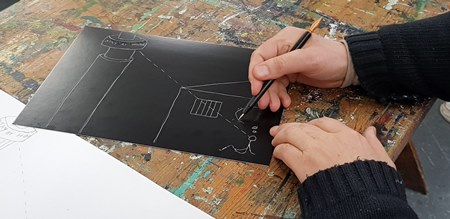
ALAS offered blended online and offline workshops in order to accommodate varying levels of anxieties participants. (Courtesy: ALAS)
The pandemic and subsequent lockdowns evidently had an impact on people’s mental and emotional wellbeing. In May 2020, during the first lockdown, the Office for National Statistics reported that the number of people suffering from high levels of anxiety almost doubled to over 25 million since the end of 2019. Also in 2020, in a survey by YoungMinds, 83% of respondents agreed that the pandemic resulted in worsening their mental health. In a 2021 study co-led by City, University of London and UCL, researchers found that COVID-19 has been exacerbating health inequalities and that “many people with mental health conditions lost access to their vital coping routines, while mental health care was disrupted for many as well”. With this in mind, ALAS posed themselves the question of how this mental health crisis could be documented and collected in the form of an artwork?
As a social art studio, ALAS offers a platform for a dialogue between an artist and the participants or audience. They explore the role of co-authorship, co-design and co-production. Their socially based work shifts the spotlight from the artist as sole creator and primary subject to the participants. Because of this, they wanted to place Londoners’ lived experience with chronic mental health issues at the centre of this commission. By doing this, they wanted to offer those whose mental health was most affected during the pandemic a chance to share and express — creatively — their experience. The final result is a piece of collaborative art that shines a light on the impact of the pandemic on the mental health of the city.
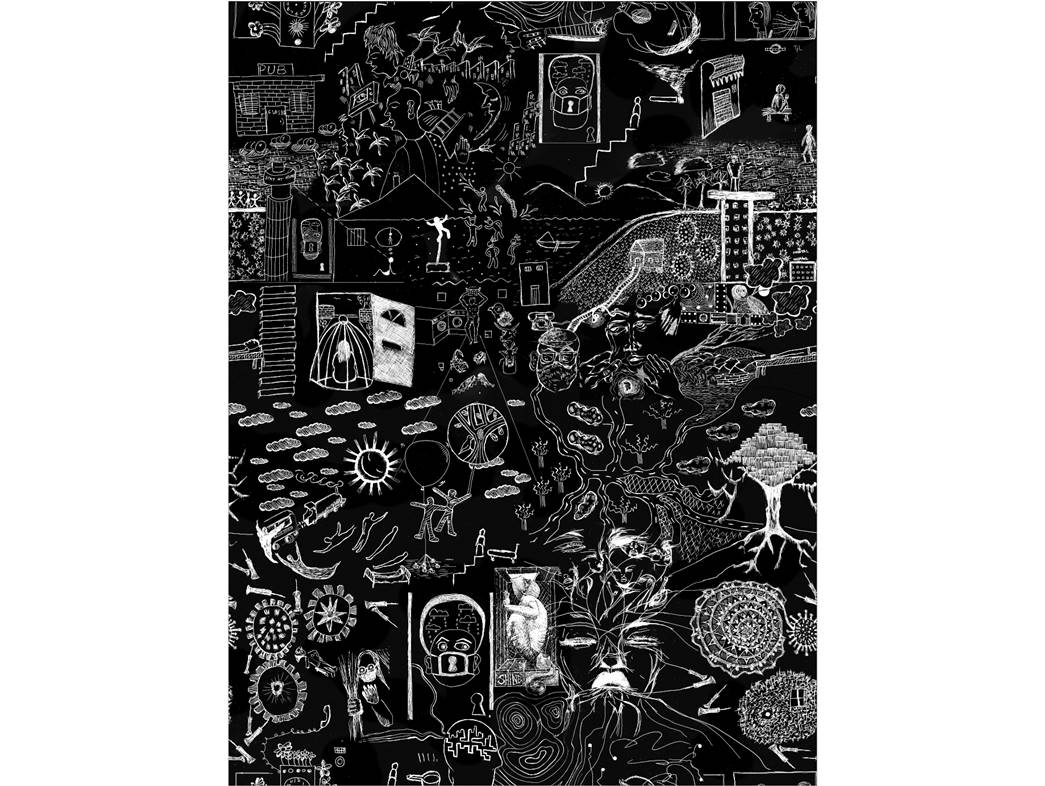
Inner Rooms Inner Minds
The commission
ALAS designed a series of social drawing workshops titled ‘Inner Rooms Inner Minds’. The workshops functioned as a reflective space for people as well as offering them the opportunity to be part of a larger group narrative. Through one-to-one and group sessions, people explored expressive mark-making on scraperboards. By the end of each session, every participant had created a visual narrative of their lockdown experience. The resulting artwork is a collation of drawings composed in a collaborative pattern, which depicts the state of London’s mental health in 2021.
Social drawing is a methodology developed by Sánchez-Camus in a series of workshops linked to From Birth till Death: Scrolled Life Stories and the ongoing touring project, WTF Just Happened?! Telling a story through symbolic language invites the participant to reframe their own narrative by placing a bird’s-eye perspective on their memories.
Partnering up
ALAS partnered with Portugal Prints, a non-clinical but therapeutic collective for artists with mental health issues and part of Mind UK, and Studio Upstairs, an arts and health charity that fosters creative communities. Call-outs were also issued through various NHS mental health clinics, through which people also had a chance to sign up to the project.
ALAS offered blended online and offline workshops in order to accommodate varying levels of anxieties participants had around COVID-19 and the easing of lockdown. Online workshops acted as a way to establish connections with others, giving them a platform to express their experience of being at home. The workshops that took place at Portugal Prints and Studio Upstairs, enabled participants to safely negotiate social relationships after lockdown, allowing them time for processing.
Turning life stories into art
During the workshops, participants shared their struggles with mental health during the pandemic. These stories are palpable in the drawings they made. One participant discussed how their drawing “shows isolation and frustrated aims and dreams. Lockdown was a silent prison. I could not escape my diagnosis or see a friendly face”. Another participant pointed out that “people in lockdown now should try and understand that a lot of people with mental health problems are in permanent lockdown, there is no vaccine, there is just a kind of acceptance”.
They mentioned how some people with mental health issues have already spent extended periods of time in isolation, so “they are quite familiar” or even “better equipped for” the experience. Another participant said that “since lockdown, people have been encountering many of the symptoms that we, the mentally ill, suffer from. In addition, living under these circumstances has made some healthy people mentally ill. As important as it was to have lockdowns (to reduce the risk of infection until the vaccines were available), it is also true that it has made the public more aware of what being mentally ill is”.
Most of us will be able to relate to the stories and drawings that came out from the workshops. There are drawings of a figure standing alone outside a boarded-up pub, or of someone on a bus anxiously hearing the person behind them sneezing. Another masked figure awaits by a telephone. Other drawings recount more severe cases of mental health, such as the stories of those who felt trapped liked in a prison. One figure, sitting inside the confines of their room, illustrates a thought of suicide. Another shows a masked, anthropomorphic man crushed into a box, with only a small space to see the outside world.
We hope that this project contributes to destigmatising mental illness, giving those with chronic mental health issues a space and platform to share their common and individual experiences.
Inner Rooms Inner Minds is a strand of the Museum of London’s Collecting COVID project, documenting the experiences of Londoners during the COVID-19 pandemic. The artwork was commissioned by the Museum of London and supported using public funding by Arts Council England.









